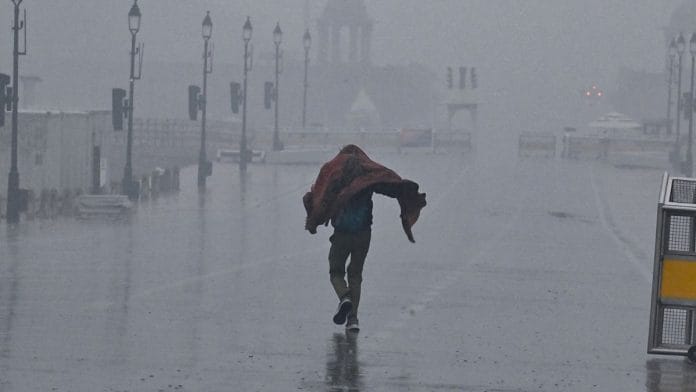New Delhi: May this year has brought an unexpected start to summer. While the pleasant evenings and the heavy spells of rain might be a relief from the heat and humidity, climate scientists say the erratic western disturbances behind the intermittent spells of rain are being impacted by climate change. This, they add, is only a glimpse of the extreme weather events that await the region.
A look at the India Meteorological Department (IMD) data for this year shows that the pattern of western disturbances over northwest and central India has been unique. At least 20 notable and back-to-back western disturbances have passed over northwest India, including the Himalayan belt, causing heavy showers in the region.
In May 2025 alone, four notable western disturbances have affected the Delhi-NCR region, making it the wettest May since 1901.
But the trend is not specific to this month. The Met Department has observed a higher-than-usual number of western disturbances this year.
In April, at least five western disturbances crossed the region.
May typically records only one or two western disturbances, while April averages around two to three western disturbances.
Western disturbances are extratropical cyclones, low-pressure systems that originate in the Mediterranean region and move eastward towards the Indian subcontinent during the winter months. These weather systems are responsible for winter rain and snowfall in northwestern India and the western Himalayas.
While these are mainly responsible for winter rain, they govern weather patterns over the region all year long. These, in fact, account for around 15 percent of the annual rainfall in the region.
In the winter months, western disturbances travel in lower latitudes, bringing significant rainfall and snow to north India. But in the summer, they switch to higher latitudes, resulting in rain and snow in the higher regions.
The erratic patterns of western disturbances in the region spell the risk of extreme weather conditions, especially in the hilly states, which become prone to landslides and floods driven by such conditions.
IMD Director General Mrutyunjay Mohapatra explained that extreme temperatures and heat stress are leading to the land and seas heating up at a faster rate. The rise in these extreme precipitation events is a result of intense heating, which accelerates the process of more moisture being pushed up in a shorter period of time.
“It is true that climate change is one of the factors that is making western disturbances more erratic. We might think of the summer season this time to be cooler, with intermittent spells of rain, but if you look at the period of heat, it is becoming more intense,” Mohapatra said.
Also Read: Human body, in the heat of the moment
Extreme weather is new normal
Heavy showers and frequent thunderstorm episodes also caused the first half of May to be cooler than April, at least in the last 15 years.
IMD data also shows that between 1 and 15 May, the average maximum temperature in Delhi was 36.7 degrees celsius—lower than the usual 40 degrees.
Senior officials from the IMD said that this year, none of the states in the core heatwave zone (CHZ)—covering parts of northwest and central India that are prone to heatwaves—experienced severe heatwave conditions as they usually do.
“A primary reason behind a cooler-than-usual summer is the frequent passage of low-latitude western disturbances,” an IMD scientist said.
IMD scientists also observed another anomaly this season.
There has been a continuous movement of moisture from the Bay of Bengal and the Arabian Sea to these regions. This moisture interacts with the local winds to cause rain and thunderstorms.
“These extreme weather events have already become the new normal. Governments will have to make cities climate change-ready,” said Mahesh Palawat, vice-president (meteorology and climate change) at Skymet Weather, a private weather forecasting service.
(Edited by Sanya Mathur)
Also Read: Heatwave isn’t sparing actors, politicians. India must build resilient cities






